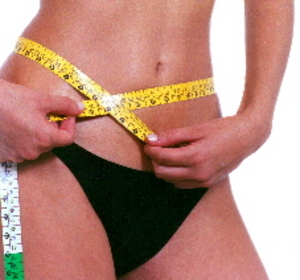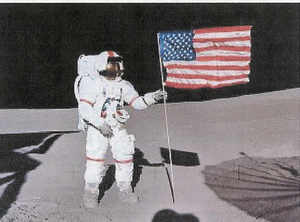Cosmopolitan Magazine is a fun and entertaining publication that has been available in the United States since 1886. Although it provides a lot of good advice and helpful tips for its readers, it is important to examine some of the implicit messages the magazine sends about gender ideals and body image. Much of the content and images featured in the magazine is centered on issues of sex and sexuality. Its articles, targeted toward young women, often emphasize the importance of looking sexy, acting sexy and attracting sexy men. This magazine portrays both men and women in very specific ways, focusing on both gender ideals. Most women in Cosmopolitan are shown as beautiful, thin and sexually skilled. Men are shown as attractive, muscular and physically strong, but often unemotional and uncommunicative. Because this is a magazine with mainly female readers, it is important to consider the impact its portrayal of women has on them.
American media in general causes many women and girls to feel that there are unrealistic expectations that they must meet, such as being thin, beautiful and having designer clothes, make-up and accessories. Cosmopolitan confirms these feelings by displaying attractive models and actresses and featuring expensive and high end products. The magazine also limits its acknowledgment of any group of people other than white and heterosexual. Even the “ethnic” women shown have very Caucasian features, and although sex and relationships are discussed frequently, lesbian and gay couples are rarely mentioned. In general, Cosmopolitan Magazine portrays the male and female genders in a skewed, stereotypical way and focuses on what is considered “normal” and “acceptable” in American society. This representation can be harmful to its readers because most people do not fit into these idealistic categories.
The media definitely has an effect on the way that people, especially women, view their bodies. People are inundated daily with images of beautiful actresses and stick thin models. Even many of the so-called “plus size” models at a size 12 or 14 are thinner than most women in America today. Cosmopolitan, just like most forms of entertainment, includes images of women who are nearly all thin and always beautiful, which can greatly affect young women’s self esteem negatively. Shari Graydon discusses this topic in her article “How the Media Keeps Us Hung up on Body Image”. The way Cosmopolitan represents women’s bodies, and then ties these images to articles about love and sex, sends the message to women that in order to be sexy and desirable, then one must also be thin and attractive. This is problematic because women should feel good about themselves and worthy of being desired no matter what they look like. Graydon states, “In 2008 the legion of aggressively promoted make-over solutions to remedy our failure to live up to feminine ideals has gone far beyond mere cosmetics, exercise regimes and diet programs. The fixes now offered include liposuction, stomach stapling, anti-cellulite creams, breast, butt, cheek and chin implants, Botox and collagen injections, chemical peels, facelifts and labia surgery. She explains how the media has made women feel so poorly about their abilities to live up to the feminine ideals of beauty, they have resorted to measures as extreme as plastic surgery in an attempt to look more beautiful, or at least what they are told is beautiful by television and magazines. Magazines like Cosmopolitan fill women’s minds with unattainable feminine standards of beauty, even though hardly anyone fits that mold. Graydon confirms this when she writes, “Women today have an unprecedented number of opportunities to judge themselves against a select and genetically freakish few”.
Although most forms of media represent women in similar ways to Cosmopolitan, there have been a select few groups that attempt to fight these unrealistic images and help women gain appreciation for themselves and their bodies, no matter what size. The Dove “Real Beauty” campaign is a bold and refreshing attempt to promote a healthy body image for women by using average women in their advertisements instead of models. Although this campaign is definitely a step in the right direction, Graydon points out its possible hypocrisy when she states, “Even the makers of Dove, which won the customer loyalty of millions of women for using images of diverse non-models, remains part of the problem. (Reflecting the cynical self-interest of the industry at large, its parent company Unilever also markets products like Slim Fast, and Fair and Lovely, a skin-whitening agent). Even the company behind this positive and well intended movement is ultimately benefiting from the poor body images of women.
As well as influencing the way women feel about themselves, Cosmopolitan also portrays men in definitive ways. Regular features in the magazine such as “Guy Without His Shirt”, “Cosmo for Your Guy” and “How I Got Him To…” all send very stereotypical messages about men and affect the way readers view them as a group. Also, all of these articles are based on the belief that all women are attracted to, and want to attract men, which in itself is a stereotype and completely discards its gay and lesbian readers, showing that hetero-normativity is central to Cosmopolitan.
Every month Cosmopolitan features a young man in their “Guy without His Shirt” article. This man, known as the “Half Naked Hunk of The Month”, is always muscular, highly attractive and submits a small questionnaire, answering questions about his relationship status, what he looks for in a girl and favorite hobbies. A segment like this is unique because usually in the media it is women that are objectified or looked at simply as sexual objects. The regular “How I Got Him To…” article gives advice from women to other women about how they successfully managed to get something they wanted from their reluctant boyfriend. Cosmopolitan introduces this article by saying, “Most guys need a little nudge in the right direction when it comes to love, whether they’re shy or just plain clueless. We want to know the clever way you persuaded your guy to do something (ask you out, drop a bad habit, start being more affectionate, buy you something you wanted, etc.)”. This encourages women to manipulate men and to always try to get whatever they want, with no discussion of honesty or compromise. This also confirms the belief of some men that women are selfish and sneaky.
The articles about women in Cosmopolitan are just as important as its images in the way they are represented. With article titles such as “How to be Just Bitchy Enough” and “Look Sexy All Summer Long” it is clear that the magazine promotes both feminine stereotypes and ideals. Many of these articles feed into some negative stereotypes thought of women such as being catty or “bitchy” and being obsessed with looks and outward appearances. While many women may fit these descriptions, the problem with Cosmopolitan and most other forms of media is that they fail to recognize the prominent numbers of women who do not. However, to its credit, Cosmopolitan’s approach to female empowerment is the promotion of the “Fun, Fearless Female”, which implies the importance of women feeling beautiful, trying new things and having a high level of confidence.
Cosmopolitan is very popular, with almost 3 million readers per issue in the United States alone, and because of this it has the ability to affect and influence these readers’ thoughts and actions. It represents women to be thin, beautiful and sexy but at the same time self centered and vain, while it shows men to be strong and attractive but out of touch with their feelings and easily influenced. While no magazine could appeal to every kind of person, Cosmopolitan could make more of an effort to appeal to a wider variety of American women.
Graydon, Shari. “How The Media Keeps Us Hung Up on Body Image”. Contemporary
Women’s Issues. 22.1 (2008). Herizons, Inc., Canada. 16 June 2008.
White, Kate. Cosmopolitan Magazine. Hearst Communications. 2008.



